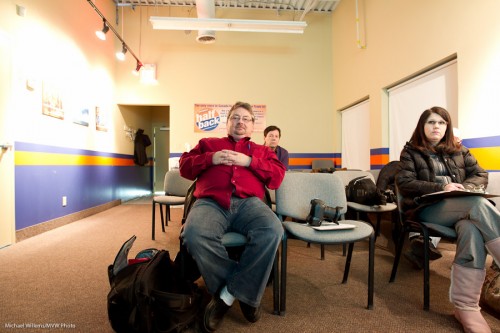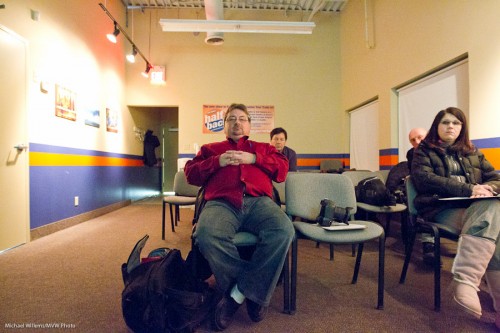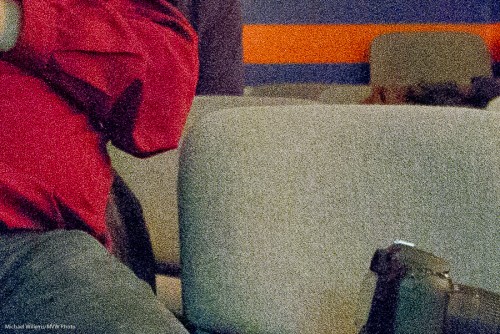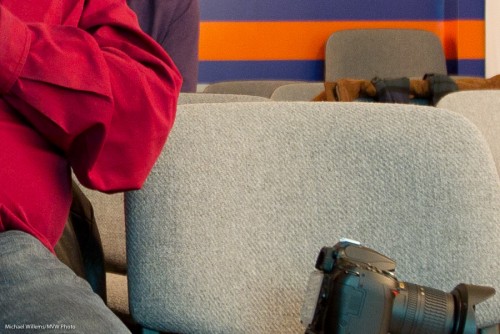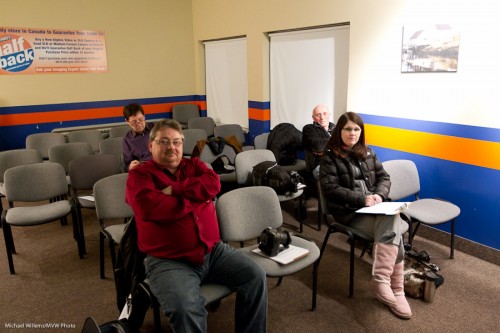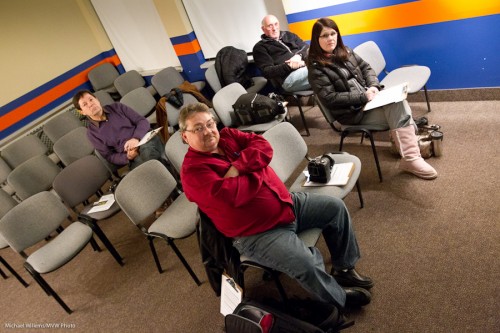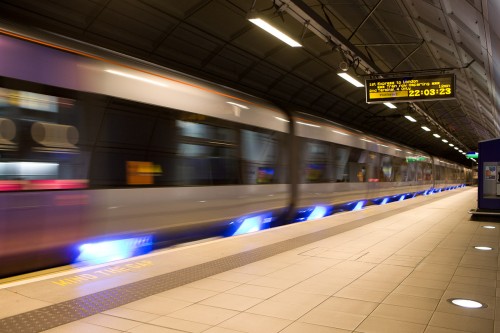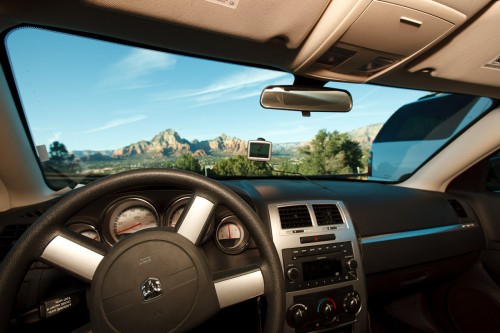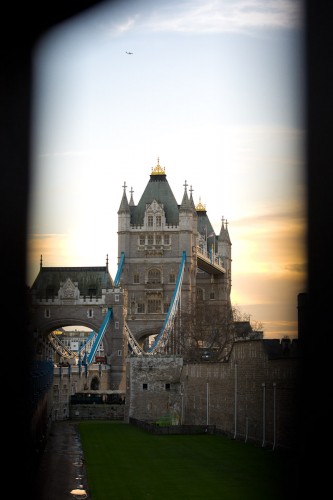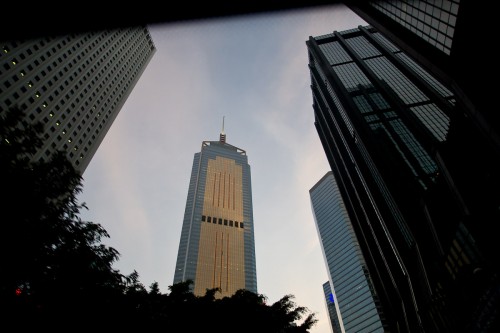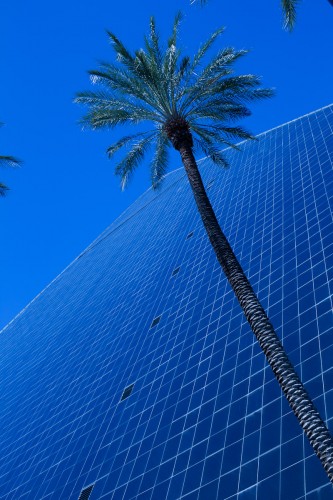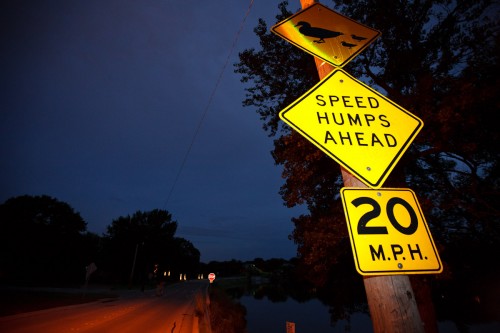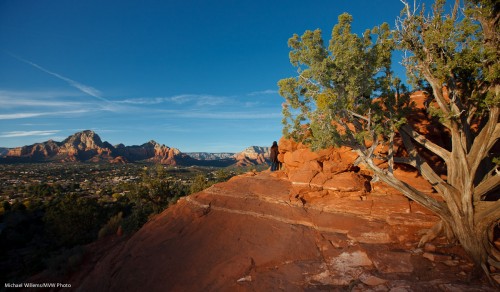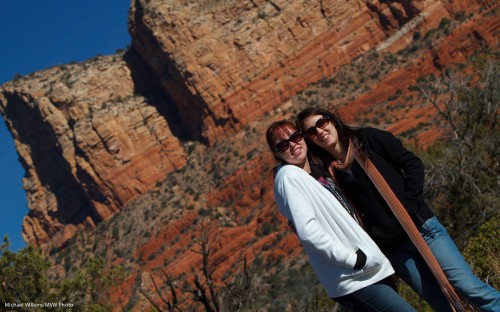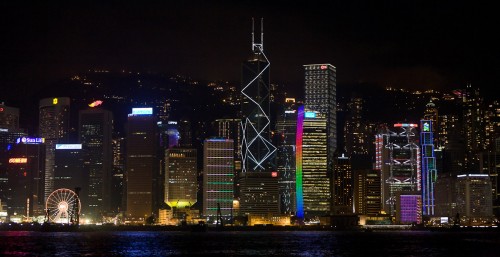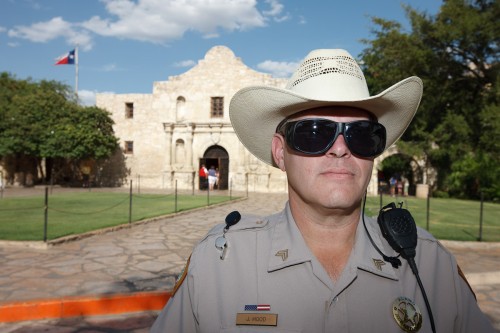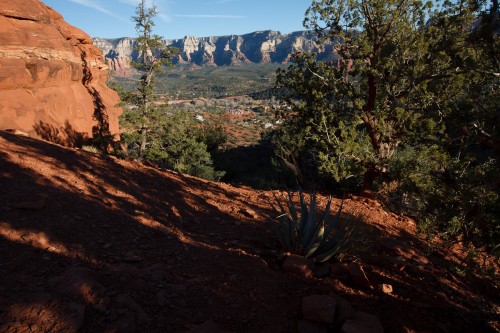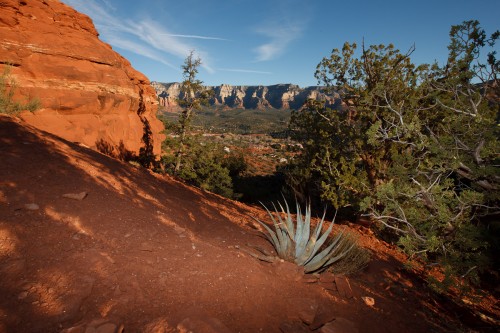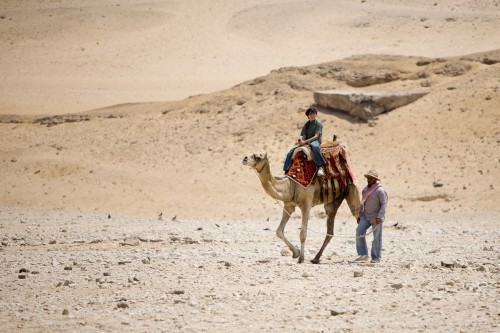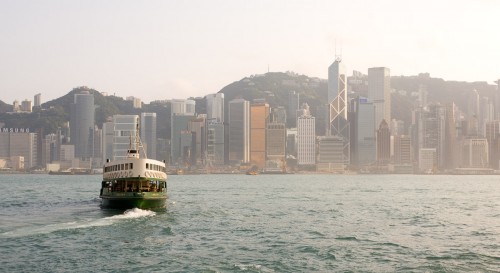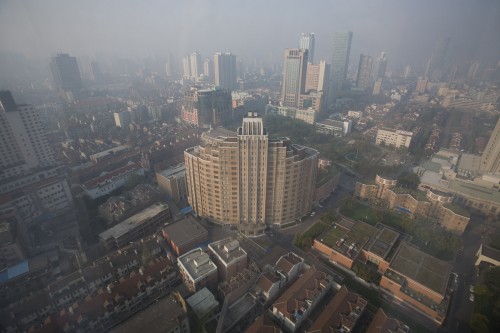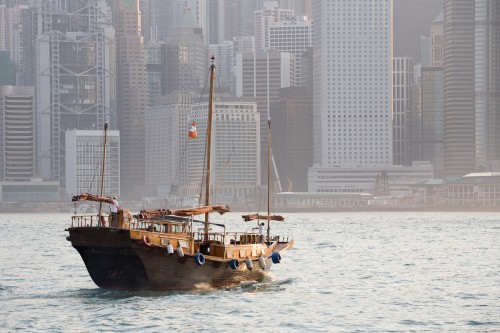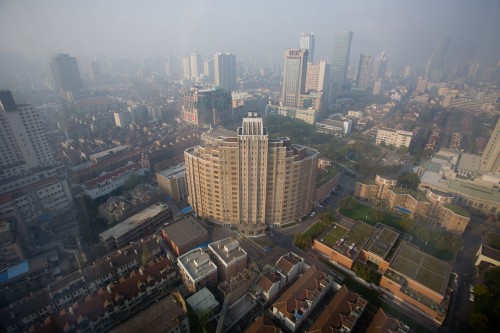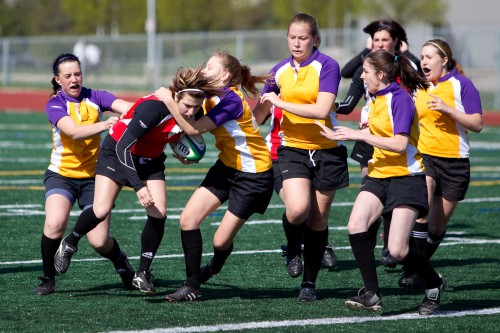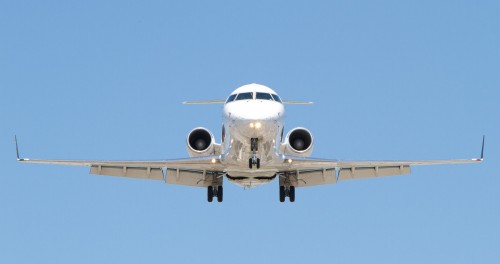Well, you do not always have to use additional lighting, of course.
Remember that image yesterday?
That was shot in the dark – yes, in a room where I had turned the lights down to almost zero visibility. Just to show it could be done.
If you use “auto ISO”, when using a wide angle lens that will lead to something like 12800 ISO at 1/15th second. As it did in my case. It looked like this:
Yeah, nice and stuff. And perfectly usable; do not be afraid to do this.
But when you zoom in, you see the drawback of those high ISO values (click to see real size):
See what I mean? Not bad, but not great, with all that grainy noise.
So then I turned the ISO down to just 400. This of course got me an exposure time of 5 seconds, so everyone sat still. Result:
I promised yesterday I would explain why I shot with this composition instead of aiming down a little? Simple: because I did not have a tripod, so I needed to use the desk to hold the camera still for 5 seconds.
If you feel like another exercise: here you go. Go shoot a night image that looks like day.
You will need a tripod. You will need patience. You will want to use a low ISO value to avoid noise. Cold northern hemisphere nights are best to reduce noise. Go try it yourself tonight. And do not forget to make your image a nice composition.

